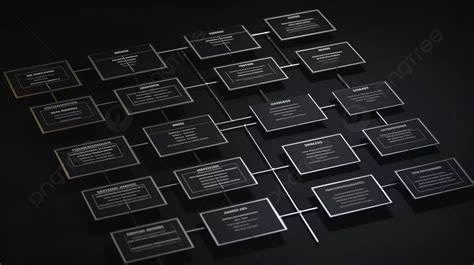In today’s digital world, having a website is essential. Yet despite millions of websites being launched each year, a staggering 90% of them fail to meet their goals. Whether the goal is lead generation, sales, brand awareness, or delivering information, most websites fall short. In this article, we examine the primary reasons behind this high failure rate and offer practical guidance to help website owners achieve success.
Lack of Clear Purpose and Goals
Many websites are built without a clear vision or purpose. When the goals of a website aren’t well-defined, everything from design to content lacks direction. This often leads to a confusing experience for visitors. For instance, a business may want to generate leads but doesn’t include a contact form or compelling call-to-action (CTA). Others might intend to sell products but fail to guide users to product pages. Without measurable goals, it’s impossible to evaluate success or failure. Defining SMART goals (Specific, Measurable, Achievable, Relevant, Time-bound) before development begins ensures every element of the site supports a unified objective.
Poor User Experience (UX)
User experience plays a crucial role in how visitors interact with a website. A site may look visually appealing, but still deliver a poor experience if navigation is confusing or if the site is not responsive across devices. Websites with cluttered layouts, small fonts, inconsistent buttons, or hidden menus frustrate users, causing them to abandon the site. Studies show users form opinions about a website within milliseconds. A poor UX leads to high bounce rates and low engagement. Websites should be designed with the user in mind, providing intuitive navigation, clean layouts, fast loading times, and mobile responsiveness.
Ineffective SEO Strategy
A website that cannot be found on search engines is essentially invisible. Many sites fail because they ignore search engine optimisation (SEO) or implement outdated tactics. Ineffective SEO includes ignoring keyword research, poor meta tags, a lack of internal linking, and duplicate content. Without SEO, websites miss out on organic traffic, which is often the most valuable. SEO is not just about ranking on Google; it’s about understanding user intent and delivering content that is relevant. A strong SEO strategy involves technical optimisation, high-quality content creation, link building, and constant monitoring of search trends and algorithm updates.
Outdated or Poor Quality Content
Content is the foundation of a website. It’s what informs, persuades, and converts visitors. Many websites fail because they publish content that is outdated, irrelevant, poorly written, or lacking in depth. Content that is too generic fails to engage users or provide value. Additionally, grammatical errors and lack of structure damage credibility. Quality content should be tailored to the target audience and aligned with their needs at different stages of the buyer journey. Updating content regularly, incorporating multimedia elements, and providing clear, actionable information increases engagement and supports SEO efforts.
Slow Load Speed & Technical Glitches

Speed is a critical factor in user experience and SEO. A slow-loading website frustrates users and increases bounce rates. According to Google, over half of mobile users abandon a site that takes more than three seconds to load. Technical issues such as broken links, JavaScript errors, and server downtime also degrade performance and trust. Many of these problems stem from poor hosting, unoptimized images, and bloated code. Website owners should prioritise performance optimisation by using tools like Google PageSpeed Insights, optimising images and scripts, and investing in reliable hosting solutions.
Not Optimised for Conversion
Getting traffic to a website is only half the battle. Converting that traffic into leads, sales, or other goals requires deliberate design choices. Many websites lack effective conversion rate optimisation (CRO) strategies. Common issues include missing or weak CTAs, lengthy forms, unclear value propositions, and a lack of trust signals like reviews or security badges. Without CRO, a website becomes a leaky funnel where visitors exit without taking action. Implementing A/B testing, heatmaps, and user behaviour analytics helps identify drop-off points and optimise for better conversions.
Lack of Maintenance and Updates
Websites are not one-time projects; they require ongoing maintenance to stay functional, secure, and relevant. Many websites fail because they are abandoned after launch. This results in broken links, outdated content, security vulnerabilities, and plugin conflicts. Regular maintenance ensures smooth functionality and protects against cyber threats. It also helps maintain SEO rankings and user trust. A good maintenance routine includes updating software, fixing bugs, monitoring uptime, and reviewing performance metrics. Without this, even the best-designed site will degrade over time.
Inadequate Branding & Visual Identity
Branding is more than a logo; it’s the visual and emotional identity of a business. Many websites fail because their branding is inconsistent or non-existent. This includes mismatched fonts, off-brand colours, generic stock images, and no clear brand message. Inconsistent branding confuses visitors and undermines trust. A cohesive brand experience makes a site memorable and helps it stand out in a crowded digital landscape. To succeed, websites must use consistent visual elements, tone of voice, and messaging that reflect their brand values and resonate with their target audience.
Misaligned Design Trends
Design trends evolve rapidly, and blindly following them without strategy can backfire. Many websites adopt flashy animations, unconventional layouts, or dark themes simply because they are trendy, not because they enhance usability. Misaligned design choices can alienate users or make content harder to consume. Good design should serve function first, then form. The best websites balance modern aesthetics with user-friendly design. Before implementing any trend, evaluate whether it aligns with your brand, audience preferences, and usability principles.
Ignoring Analytics & Feedback
Without tracking and analyzing user behavior, website owners miss crucial insights. Many sites fail because decisions are based on assumptions instead of data. Ignoring analytics means not knowing what content performs well, where users drop off, or how they interact with CTAs. Tools like Google Analytics, Hotjar, and Search Console provide valuable metrics on traffic sources, user engagement, and conversions. Regularly reviewing this data allows for informed decision-making and continuous improvement. Additionally, collecting user feedback through surveys or live chat helps identify pain points and areas for enhancement.
No Integration with Marketing Channels
A website should be the hub of all digital marketing efforts, not a standalone entity. Many websites fail because they are not integrated with email marketing, social media, or advertising campaigns. This results in inconsistent messaging, missed opportunities for lead capture, and fragmented user journeys. For example, running ads without dedicated landing pages or collecting emails without an automation strategy weakens conversion potential. Successful websites align with marketing efforts through CRM integration, social sharing, campaign tracking, and funnel design to drive consistent traffic and conversions.
Targeting the Wrong Audience
Understanding your audience is fundamental to website success. Many sites fail because they target too broad an audience or the wrong demographic entirely. Without defined user personas, messaging becomes generic, and content fails to resonate. For instance, a tech-savvy user expects different languages and features compared to a beginner. Targeting the wrong audience results in low engagement, high bounce rates, and poor conversions. Conducting audience research, building personas, and tailoring content and design to specific user segments greatly improves relevance and performance.
No Unique Value Proposition (UVP)
Your website should communicate what sets your brand apart. Many websites offer similar products or services, making differentiation crucial. A weak or missing unique value proposition (UVP) leaves users unsure of why they should choose your business. This leads to high exit rates and low retention. A strong UVP appears above the fold, is easy to understand, and addresses customer pain points. It should be supported by proof points like testimonials, case studies, or data. Without a compelling UVP, even high-traffic websites struggle to convert visitors.
Legal & Accessibility Issues
Legal compliance and accessibility are often overlooked but are critically important. Failure to meet accessibility standards can exclude users with disabilities and lead to legal consequences. Likewise, missing privacy policies, cookie consent, or data protection compliance (e.g., GDPR) undermines trust and may result in fines. Ensuring accessibility involves using proper contrast ratios, keyboard navigation, alt text for images, and screen reader compatibility. Tools like WAVE and UserWay help identify compliance issues. A successful website is inclusive, secure, and transparent in how it handles user data.
Conclusion
Website success requires strategic planning, technical expertise, and ongoing optimisation efforts that many organisations underestimate or inadequately resource. The fourteen factors examined represent interconnected challenges that compound when left unaddressed. Organisations that recognise these pitfalls and implement comprehensive strategies to address them position themselves for sustained digital success.

The complexity of modern website development and optimisation demands specialised knowledge across multiple disciplines, including user experience design, search engine optimisation, content strategy, and technical development. Organisations that invest in professional expertise and maintain long-term perspectives on digital asset development consistently outperform those that treat websites as one-time projects rather than strategic business investments.
Continuous improvement mindsets and data-driven decision-making processes enable organisations to adapt to evolving user expectations and technological changes. The digital landscape will continue evolving, but the fundamental principles of user-focused design, technical excellence, and strategic alignment remain constant foundations for website success.
Don’t just build a website. Build a platform for growth, engagement, and success.
Please feel free to reach-out to us or comment in case you have any observations on our thoughts.









